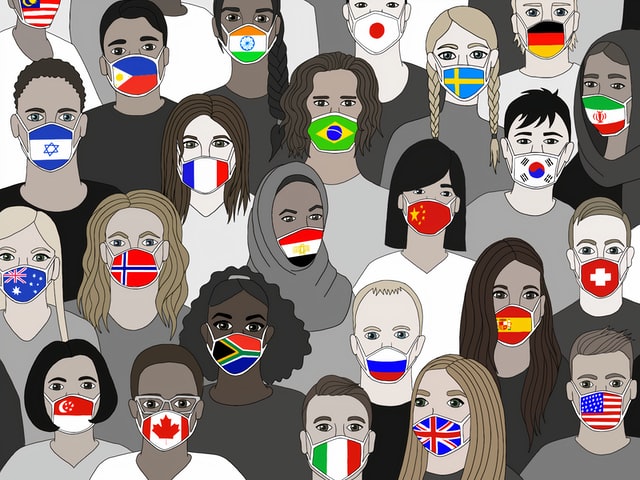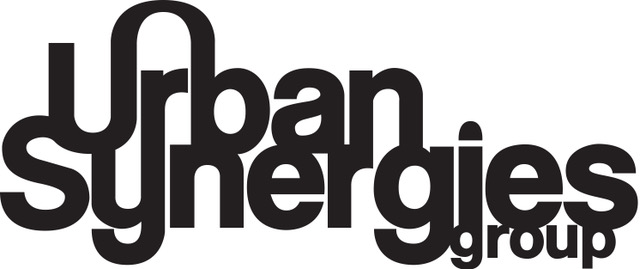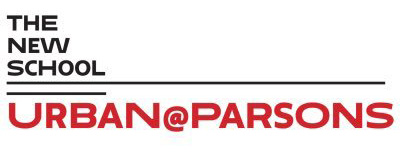Series 1 - Webinar 3
2020: A Year without Public Space under the COVID-19 Pandemic
Health Disparity and Public Space in High Density Environments
Thursday 21 May 2020 / Series 1 (May) - Webinar 3
>>> Speakers and agenda
>>> Programme of our COVID-19 initiative
The webinar was initiated and hosted by Luisa Bravo (City Space Architecture / The Journal of Public Space, Italy), Hendrik Tieben (The Chinese University of Hong Kong, Hong Kong) and Gregor H. Mews, (Queensland University of Technology / Urban Synergies Group, Australia), part of the series “2020: A Year without Public Space under the COVID19 Pandemic”.
The virus does not affect everyone equally but heightens the health disparity and the vulnerability of certain groups. This webinar was designed to look into the context of urban density covering the scales of floor area ratio, dwelling units and population (The Density Atlas, 2011), illustrating case studies from New York, Delhi, and Hong Kong which were hit very differently in the pandemic.
Credits
Recorded video of the webinar produced by Yin-Fen Chen, The Chinese University of Hong Kong
Summary of the webinar curated by Stephanie Cheung, The Chinese University of Hong Kong
Insights from speakers
Miodrag Mitrasinovic, The New School, New York, USA
“If you look at what you need in order to surpass the impasse we are in, you need resilience at the community level. Where you find the resilience at a community level are paradoxically places where coronavirus hit the hardest.”
Miodrag presented the contrasting case between one of the wealthiest and one of the poorest neighborhoods in New York along subway line 7. Hudson Yards is the largest real estate development in the history of the United States that cost the city more than $5 billion in public funds. It required the subway line 7 to be extended, and together with the High Line has created the wealthiest white neighborhood in the city. A 45-minute ride east on the subway Line 7 brings one to 103 Street/Corona Plaza Station, an area with a high number of essential employees and their families. Risk factors such as income level, overcrowding, lack of health insurance, high percentage of individuals with serious health problems, and age had pointed to high public health risk even before the pandemic. Naturally, the COVID-19 pandemic has had a disastrous impact on the Corona neighborhood. Designed and built as a part of the NYC Plaza Program, Corona Plaza was turned into a lively public space situated right next to the subway station, costing only $2 million in construction and $60,000 annually for maintenance. The plaza has been the epicenter of community life since 2018 when it opened, highly frequented by differentiated communities, weaving a web of resilient and interdependent relationships, which ironically was also the reason why the pandemic could spread pervasively. Miodrag argued that Corona communities have created an ‘Infrastructure of Inclusion’ by catalyzing and sustaining processes of transformation – of themselves, their communities, and their society – towards more diverse, democratic, just, and inclusive city, by creating Corona Plaza and in the process the new public.
Mindy Fullilove, The New School, New York, USA
“Infrastructuring is the key if we are going to have any kind of hope for peaceful re-entry into life given the extent and pain of the root the world is going through.”
Mindy wrote the book Root Shock, illustrating how urban renewal programs in the US destroyed neighborhoods and removed people without careful considerations like plants are removed in gardening, causing a “Root Shock”. People were dispersed and entered into states of confusion and near despair, losing all or part of one’s emotional system. Mindy thought that the whole world is experiencing “Root Shock” in this pandemic, all of us face the risk of infection and experience some kinds of disruptions. With the closing of many businesses and organisations, we won't emerge into what we retreated from. Infrastructuring thus becomes the crucial physiatric and social process of managing this mental health crisis, which otherwise cannot be handled by the healthcare system through therapies. Mindy gave three recent examples. 1) New Orleans musicians videotaped second-line performances so that people in mourning could have access to it. 2) A Catholic church decided to take the church to people with priests circulating the neighborhood, stopping at each house who set their own altars and pray together. 3) The Poor People's Campaign had artists make posters “stay inside, stay alive, organize, don’t believe in lies” to lift people's spirits. With these joint efforts, they can hopefully manage the distress of the population, if not, would otherwise turn into serious civic conflicts.
Mahak Agrawal, The Spatial Perspectives, India
“There is no point in going back because right over here we can either die from the pathological virus or we can die from hunger.”
In highly dense slums/basis in India, social distancing is a privilege. Often, the only open space in slums is being used for various purposes, from bathing to dumping waste and washing clothes or just chilling. Despite the 100+ million toilets built since 2014, declaration of 'open defecation free India' in October 2019 by the Central government, over 300 million people continue to defecate in the open since the facilities are unusable. These unusable facilities present a high risk of faecal-water borne COVID-19 transmission. Also, the national lockdown enacted on March 24 prohibited outdoor activities and caused many industries to shut down, affecting the urban informal sector and its workforce. Embarking a journey in the scorching heat, hundreds of thousands of informal workers started moving from the informal settlements in the cities back to their original villages. Some- who left villages for cities for a better life and sold off their village land- decided to stay and rely on fickle aid packages from the government and NGOs. Amid the pandemic and social-economic crisis emanating from it, a huge challenge is to plan for safer and healthy communities after COVID-19, particularly for the informal sector and habitations.
Fan Ning, Health in Action, Hong Kong
“I believe that health issue is a social issue, and we need a social solution to treat, not only drugs, vaccines, or injections.”
Fan Ning defined Space as “Social Justice, Public Health, Active Living, Co-Design, Equity'' in Hong Kong’s context. Public space is an interesting concept in Hong Kong; while the city has over 60% of green space, the urban settlements are so dense and the average living space is very low - over 116,600 households live in subdivided units. Although Hong Kong ‘enjoys’ greatest longevity, quality of life is yet to be determined. Poor households spend significantly more on essential items (housing, food, education, healthcare, transportation, recreation and culture) and Hong Kong reaches a poverty rate of 15% despite its economic prosperity on the surface. The working poor, disabled, and ethnic minorities suffer from higher rates of BMI (overweight), hypertension, diabetes, and they are oddly unfamiliar with local and governmental health care resources.
Fan Ning reminded us of the International Covenant on Economic, Social and Cultural Rights Article 12, which states that everyone has the right to enjoy the highest attainable standard of physical & mental health. However, this responsibility should not be shouldered only by health workers, which is just one factor among the overlooked spectrum of social determinants of health. The concept of health equity is essential, in which social inclusion is an important notion, coupled with healthy access to space and a primary health care system that also takes care of social determinants of health in addition to plain symptoms curing. COVID-19 exposes the vulnerability of many such as street cleaners, security guards, delivery workers. Fan Ning hopes that Hong Kong can one day become a “healthy city”. This requires communal united effort: everyone can contribute and should understand and reach out to those who suffer most.
Commentary
Jens Aerts, ISOCARP Urban Health Community of Practice / BUUR, New York, USA
The International Society of City and Regional Planners (ISOCARP) initiated a working group on urban health back in March, yet COVID-19 prompted the group of planners to accelerate rethinking the role of city planning and how to design in the future with urban health at the core. Jens shared five comments in response to the presentations of the webinar:
- Choice of words makes a difference, call for ‘physical distancing’ over ‘social distancing’, and highlight the issue over overcrowding instead of an inaccurate judgment on density. A majority of countries opted for a lock-down including shelter-in-place, which highlights the challenge of those in low-quality housing and overcrowded neighborhoods to comply with physical distancing. In the meantime, social and local connections have proven to be crucial during the pandemic to keep resilience intact in communities, even in dense environments where space is limited.
- An opportunity created by the pandemic is to leverage public space as a component of a resilient urban health system, with the notion of ‘public space as a spatial vaccine’, especially for cities with populations residing in cities where public space and public transportation are limited.
- The reversed migration patterns and the new ways of living and working supported by digital connectivity underline the importance of metropolitan planning, that recognises the urban-rural continuum, plans the layout of key urban systems that provide eco-services (such as nutrition, water and waste management) and recognises the need to improve quality of live and economy in both city center and underserviced peripheries.
- Build a health resilience system on neighbourhood-scale, with traditional and more innovative infrastructure for social services that embrace hybrid programs (such as schools that appear as key food hubs for children) and reflects principles of proximity and inclusion.
- City designers have a role to play to develop healthy built environments that support systemic solutions for the other, slow pandemic that exists, related with non-communicable diseases and explaining the rise of cancer, pneumonia, obesity, stress and mental health issues. Health system is more than health care, it requires a holistic approach, including a built environment dimension.
Jens closed by acknowledging how we are together still in shock, but this is exactly the chance to show solidarity and cope with our collective trauma together.
Roundtable discussion
Miodrag mentioned the importance of ‘infrastructuring’, what do you think is one of the most important infrastructure (spatial or community) that can help the current situation?
Mindy agreed on Fan Ning’s idea of social determinants of health and how the healthcare system only attributes to 20% of it, and how space is organised is naturally part of the remaining 80%. Stability also plays a big role in the crisis, people can adapt to bad conditions if they are stable. The key question is how do we slowly get better at a pace human beings can adapt to. Mahak reminded us that infrastructure is not only about the building of it, proper deployment is as paramount. Fan Ning echoed the term ‘physical distancing’ and pointed out how social relations and mutual social support are more significant than physical infrastructure in order for people to overcome the pandemic. This is especially true in this information overload era and for the elderly. Miodrag stressed on how trust and sustained relationships at neighborhood level are the bottom lines of ïnfrastructure of inclusion”.
Have you observed any obstacles to the access of public space?
Jens explained the reason why masks were not made compulsory in Belgium was that there were not enough masks available. If the ban were to go ahead, the most vulnerable groups would be affected most. So it was more logical to impose shelter-in-place while reserving a limited amount of masks to health care workers and the most vulnerable. One of the motivations behind the fuss over masks in Hong Kong was the need to go to public space. As illustrated by Fan Ning, many vulnerable groups reused the same mask for over a week due to the lack of resources to purchase more. Yet this is also an issue subject to local contexts, with some citizens discriminating or even threatening people who wear masks in some countries.
As a planner and practitioner, how can we help communities to recover from the shock and improve in the future, especially under neoliberalism?
Miodrag pinpointed the effect of capital-intensive development: inequality. Community and communal work play a key fundamental role in creating a successful process of urbanisation, which then holds the government accountable. Mahak suggested that in addition to compulsory environmental impact assessment and hazard impact assessment in planning, the priority for planners is to create a health risk and health-based assessment with a plan of actions. Mindy emphasized that the abuse of the environment makes it easier for emerging diseases to happen at an increasingly rapid rate. Jens raised a provoking point of not only looking for vaccines and taking a purely medical approach but to start the discussion around implementing sustainable urban planning and defining a global health system.
Fan Ning concluded with the idea of how we are creating a super virus and bacteria every day by disinfecting the concrete environment and destroying the earth’s ecosystem, which then requires the health workers and systems to settle the diseases that have thus emerged, almost like schizophrenia... At the end of the day, it’s a matter of choice of life and the consequences it brings.
Reading materials
Mindy Fullilove’s blog: mainstreetnj.blogspot.com
“COVID-19: never again as before” by Jens Aerts (Apr 10, 2020)
Mitrasinovic, M. (2016) Concurrent Urbanities: Designing Infrastructure of Inclusion. Routledge.
Simone, A.M. (2004) People as Infrastructure: Intersecting Fragments in Johannesburg. Public Culture, 16(3). pp. 407-429.
Parrott, J.A. and Moe, L. (2020) The New Strain of Inequality: The Economic Impact of Covid-19 In New York City. Center for New York City Affairs, The New School. Available at: http://www.centernyc.org/reports-briefs/2020/4/15/the-new-strain-of-inequality-the-economic-impact-of-covid-19-in-new-york-city. Last accessed on 14 May 2020.
Tonnelat, S. and Kornblum, W. (2017) International Express: New Yorkers on the 7 Train. Columbia University Press.
Mogilevich, V. et al. (2016) Corona Plaza Es Para Todos: Making a Dignified Public Space for Immigrants. Queens Museum.
Hester Street Collaborative, Make The Road New York, and Center for Popular Democracy (2020) Excluded in the Epicenter: Impacts of the Covid Crisis on Working-Class Immigrant, Black, and Brown New Yorkers. Hester Street. Available at: https://hesterstreet.org/wp-content/uploads/2020/05/Excluded-in-the-Epicenter_final-compressed.pdf. Last accessed on 14 May 2020.

![]()




